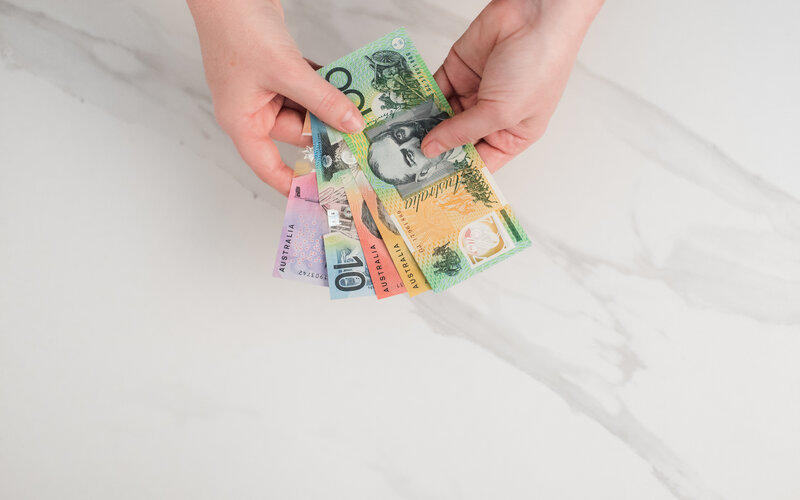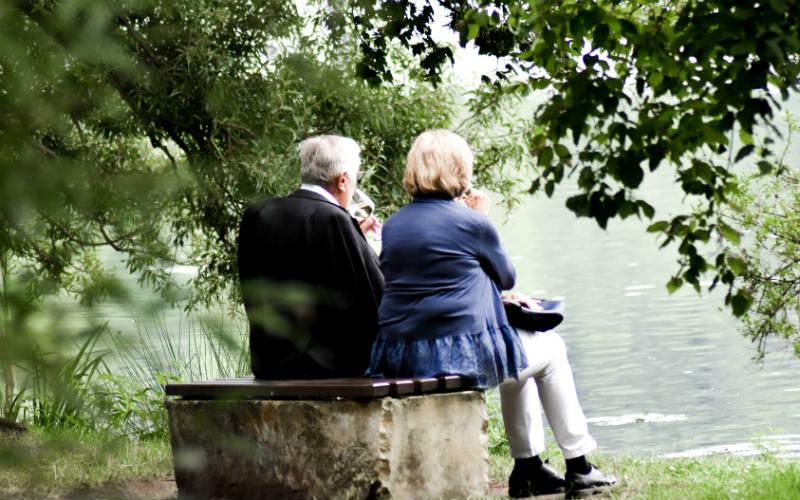Banks rarely go bust, but it does happen. As recently as March 2023, financial markets watched nervously as two global banks collapsed, California's Silicon Valley Bank and Switzerland's banking giant Credit Suisse which had been around since 1856. Then in May the same year, another US bank First Republic Bank went under.
Analysts blamed a combination of factors: high interest rates, asset values, concentrated markets, corporate decisions, and risk management. And while the fallout was contained, it reminded the world that banks aren't always as safe as… a bank.
Unfortunately, financial institutions have been going under for hundreds of years. That's why some older people may still prefer the cash in the mattress model of savings. But in Australia, you can rest assured that your best option to secure your money safely is with an authorised deposit-taking institution (ADI) - banks, building societies, credit unions, and the like.
During the 2007-8 global financial crisis, the Australian government introduced the Financial Claims Scheme (FCS) to protect customers in the unlikely event of their financial institution collapsing.
In simple terms, the FCS guarantees consumer deposits up to $250,000 per account holder per ADI. For the average Australian saver, that's a pretty good safety net.
Essentially, it gives you peace of mind knowing that your money (or a significant chunk of it) will be safe if the worst happens. It also sounds a bit more comfy than sleeping on a cash-stuffed mattress. Let's check all the details.
How does the deposit guarantee scheme work?
In the unlikely event that a bank, building society, or credit union collapses in Australia, the financial claims scheme is a government guarantee that guarantees to reimburse funds held in eligible accounts. The scheme covers deposits (your savings) up to a limit of $250,000 for each account holder per institution your money is held in.
Here's an example:
Gary Antee has two lots of $250,000 in two separate term deposits with different ADIs that both collapse. In the event of such a financial meltdown, the deposits at the two separate institutions would be covered and Gary would receive $500,000 back.
But if Gary had $500,000 in a term deposit with a single institution, he would only receive half his money back ($250,000) if his ADI were to go under.
The Australian government activates the FCS in the event an institution fails. The Australian Prudential Regulation Authority (APRA) administers the scheme and returns deposits to account holders within seven calendar days.
What types of financial institutions are covered by the financial claims scheme?
The FCS covers the following banking institutions incorporated in Australia and authorised by APRA:
-
Australian banks
-
Foreign subsidiary banks
-
Building societies
-
Credit unions
-
Certain other authorised deposit-taking institutions.
If you're unsure whether your financial institution is an ADI, you can view the full list of banks, building societies, and credit unions covered under the scheme on APRA's website.
It is important to note the FCS does not apply to branches of foreign banks in Australia, foreign branches of Australian banks that are located overseas, and of course, financial institutions that are not authorised by APRA.
What type of accounts are covered by the financial claims scheme?
According to APRA, the types of accounts that are covered by the FCS include:
-
Call accounts
-
Current accounts
-
Cheque accounts
-
Debit card accounts
-
Transaction accounts
-
Personal basic accounts
-
Cash management accounts
-
Farm management deposit accounts
-
Pensioner deeming accounts
-
Mortgage offset accounts (both 100% or partial offset) that are separate deposit accounts
-
Trustee accounts
-
Retirement savings accounts
Under the FCS, an account holder can be an Australian resident/citizen or non-resident/non-citizen.
A group of individual trustees of a trust, approved deposit fund, or superannuation fund are recognised as a single account holder. That means the $250,000 guarantee applies for the group, not each individual.
Some things to watch with ADIs
As we've covered, the financial claims scheme is capped at one person per ADI. Usually identifying your ADI is quite straightforward. Accounts are generally held under the name of the ADI itself but be aware that some financial institutions can also offer accounts marketed under different trading names (e.g. BankWest being another trading name for the Commonwealth Bank of Australia).
Some ADIs may also offer accounts under the name of a different company that isn't an ADI but a subsidiary of the ADI (e.g. Westpac offering accounts through RAMS). If the account is with the ADI (in this case, Westpac), it will be covered by the FCS.
Other ADIs may offer accounts branded or marketed under the name of a third party (e.g. Bank of Queensland offering accounts under 'Virgin Money Australia' brand). Again, provided the account is with the ADI, it will be covered by the FCS.
APRA advises checking the terms and conditions of your specific product. The different brand names can be confusing if you're ever in the unfortunate position of having to work out how much you'll be covered for under the $250,000 cap per ADI.
Let's use another example with Gary Antee.
If Gary had $250,000 with NAB and $250,000 with CommBank, each account would be safe under the guarantee.
But if Gary had $250,000 in an account with NAB and another $250,000 with Ubank, he would only be guaranteed $250,000 as Ubank is owned by NAB and therefore operates under the same ADI.
In short, the guarantee applies to ADIs and not brand names.
Is it possible that my bank will go bankrupt?
With all this talk about financial institutions failing, collapsing, or going bankrupt, how much do we need to be worrying about it in Australia? The risks are actually very low.
In fact, the last official Australian bank failure where any deposits were lost was back in 1931 during the depths of the Great Depression. Two small banks, the Primary Producers Bank and the Federal Deposit Bank lost a small fraction of their customers' deposits.
In more recent history, a number of financial institutions have faltered but were either sold to other banks or received government bailouts. The State Banks of both Victoria (in 1990) and South Australia (in 1991) were bought out by larger banks while, in 1992, R&I Bank, now known as BankWest, survived when the Western Australian government stepped in to guarantee deposits.
The chance of banking collapses in Australia is also considerably lower than in many other developed countries due to APRA requirements. APRA sets a minimum level of liquid assets that all financial institutions must hold. This is designed to safeguard the institution in the event of a 'bank run' when too many customers attempt to withdraw their deposits within a short time period.
Along with the FCS, set up in 2008, it's safe to say the chances of a bank collapse and customers losing their deposits are very minimal in Australia.
However, that's not to say banking regulators are complacent. In October 2023, the Reserve Bank of Australia's assistant governor (financial system) Brad Jones noted that outside geopolitical risks, the rapid speed of digital transactions, cyberattacks, and climate change are the new frontiers in ensuring the stability of financial institutions. Certainly, the rise of digital banking is changing how the market operates.
Are neobanks covered by the financial claims scheme?
If you're with a challenger bank or neobank like Judo Bank, you can rest assured your hard-earned deposits are also guaranteed. Digital banking platforms have to go through the same regulatory approval process as traditional banking institutions to be granted an ADI license.
If your neobank is licensed as an ADI, it will be covered by the financial claims scheme for up to $250,000. However, it's worth checking the APRA website to see if your particularly neo or microbank is approved. Some smaller global players may not be on the list.
Savings.com.au's two cents
Although Australian banks and other institutions are well placed to withstand financial turbulence, it's wise to have a back-up should a worst-case scenario ever play out.
At the very least, it's worth confirming that where you stash your cash is a registered ADI covered by the financial claims scheme. If you've got buckets of money, it's also wise to keep it deposited between several ADIs in sums of $250,000 or less to give yourself the best chance of recouping the lot in the black swan event of a complete financial meltdown. Although it's unlikely to ever happen, there's a lot to be said for the old adage of hoping for the best and preparing for the worst.
Need somewhere to store cash and earn interest? The table below features savings accounts with some of the highest interest rates on the market.
First published on June 2022
Image by sweetlouise via Pixabay







 Bea Garcia
Bea Garcia

 Bernadette Lunas
Bernadette Lunas
 Jacob Cocciolone
Jacob Cocciolone
 Emma Duffy
Emma Duffy

